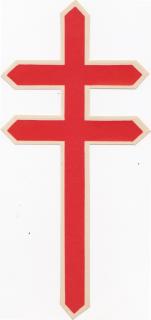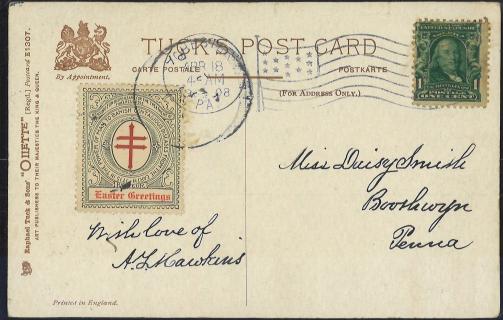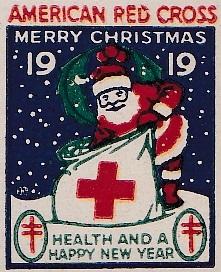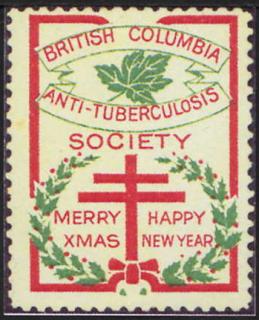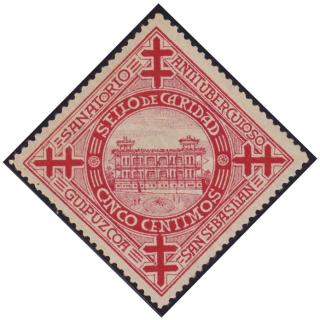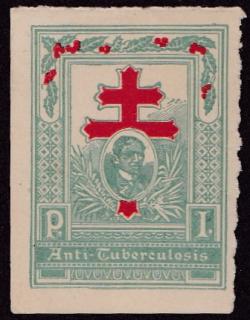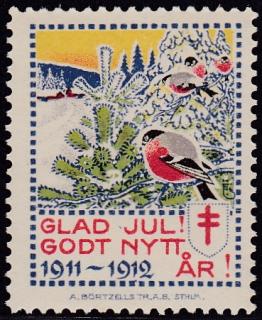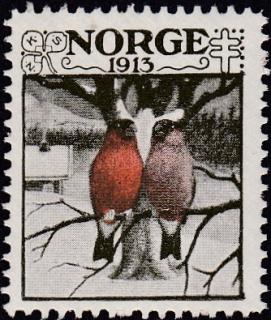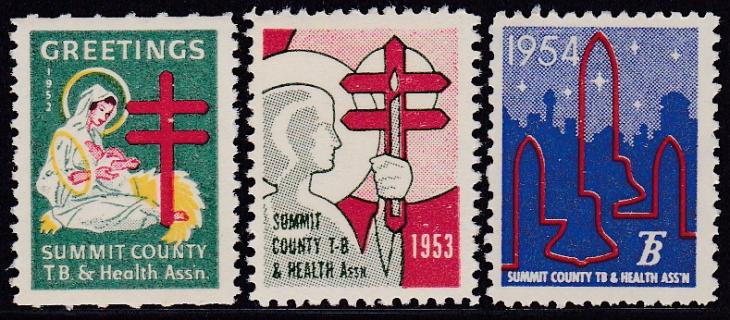The double barred cross, or cross of Lorraine was first suggested as the international symbol for the fight against tuberculosis at the 1902 International Conference on TB in Berlin, Germany. This crusader's cross belonged to Godfrey of Bouillon, who in 1099 became the ruler of the Christian state of Jerusalem. The symbol was first used on a fundraising label in 1907-08 by The Kensington Dispensary in Philadelphia, PA., a US local TB seal. Like many early local TB organizations, Kensington was absorbed by our national Christmas seal association; now known as the American Lung Association. In 1919, when our national Christmas Seal society split off from the Red Cross, they became the National TB Association, and have used the double barred cross ever since.
In 1954 the NTA sued and won against a US Local TB organization, Summit County TB, of Akron, Ohio, for their use of the double barred cross. This symbol for the "Crusade against TB" was, and continues to be used internationally; first use in Canada 1908, Spain 1909, Philippines 1910, Sweden 1911, Norway 1913, and by the late 1920's many countries had adopted it. To avoid any confusion, here in the US, the double barred cross belongs ONLY to our national Christmas Seal society.
Illustrated here are the double barred cross, a Kensington TB seal tied on, 1919 NTA Christmas Seal, Early foreign TB seals uses of the double barred cross, and the first three issues of Summit County TB, showing their infringement, and subsequent removal of the double barred cross.
Special thanks to member George Painter for bringing this case to our attention.

